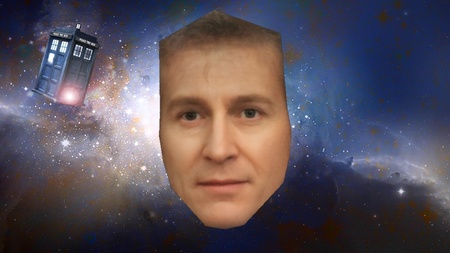Millions of Dr Who fans are set to be gripped as the latest incarnation of the famous Time Lord is unveiled on Christmas Day.
But now psychologists at the University of Aberdeen Face Lab have revealed what they claim to be the ‘real face’ of the iconic TV hero.
Cutting-edge ‘face averaging’ technology, developed at the institution as part of research into face recognition, was employed to create the average face of Doctor Who.
Images of the 13 actors who have filled the time- travelling hero’s shoes – from the inaugural Doctor, William Hartnell, to Peter Capaldi who will step into the role in the highly-anticipated Christmas episode - were used to develop the image.
The scientists behind the project, that highlights the importance of ‘face averaging’ in helping us recognise and recall a person, say the image provides a remarkable insight into the true identity of the mysterious character.
David Robertson from the University of Aberdeen’s Face Lab, which conducts research into the cognitive processes involved in the perception and recognition of faces, said: “It’s interesting that the face we have developed is not dominated by the features of any one of the actors to have played The Doctor.
“Rather it represents a combination of the averaged features of each actor to have taken on the role. Indeed, this face average could guide future casting directors in their search for the ideal actor to play the Time Lord!”
Dr Robin Kramer, also from the University’s Face Lab said: “The software we used allows us to identify specific landmarks on each of the images of The Doctor, such as the eyes, nose and mouth – what we call the ‘shape’ component.
“We then use these landmarks to average all of the images together, also taking into account their colour and texture.”
The scientists behind the project say Doctor Who represents the extreme form of their line of research.
Mr Robertson continued: “Of course, Dr Who takes on an entirely new face each time he regenerates. However, in the real world, people keep the same face but it varies considerably across their lifetime, and in photographs. How this relates to our ability to recognise faces is one of the key issues our current research is tackling.
“Evidence has shown that face-averaging could be a powerful tool. Previous studies indicate that when you make an average image of a face - essentially creating a prototype with the irrelevant information removed - this significantly enhances the ability of a computer to correctly identify a face.”
“This work has clear implications for the security sector in terms of the development of facial recognition technology.”
For more information on the University of Aberdeen Face Lab visit www.abdnfacelab.com .


